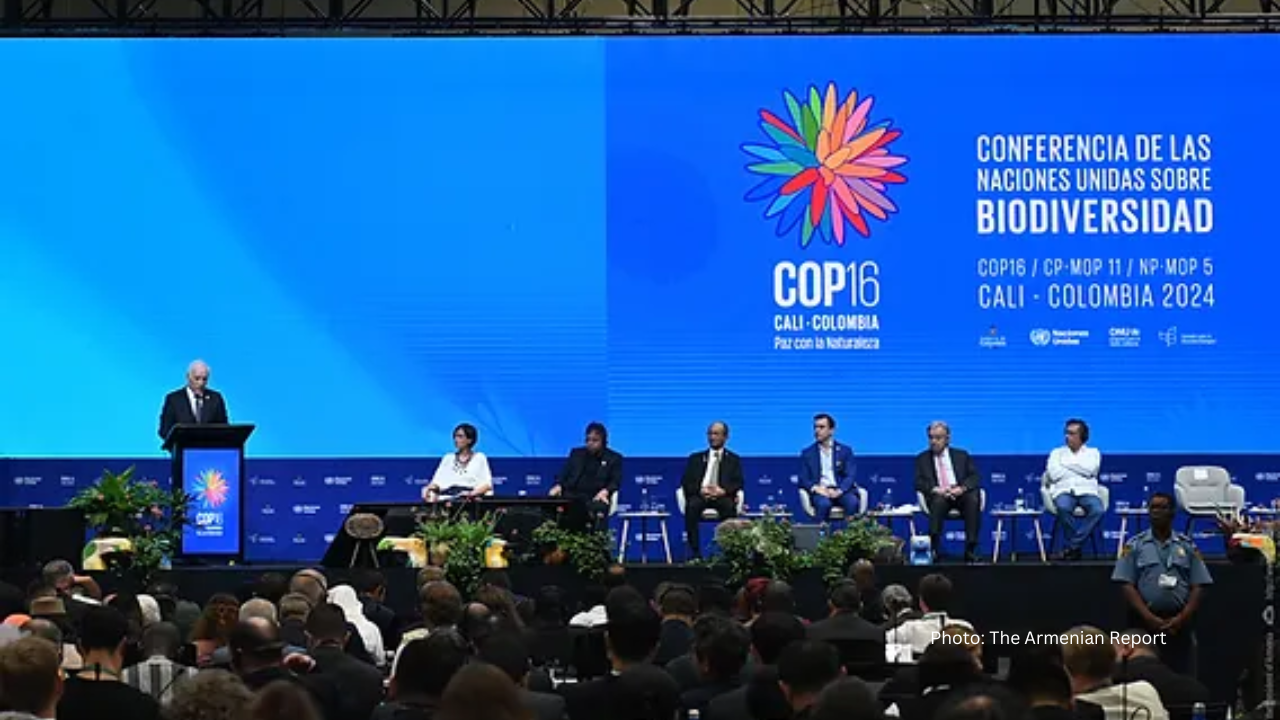Suspended Biodiversity COP 16: A Summit Without Budget for Agenda Implementation Towards the Goal of “Making Peace with Nature”
Really Chakma | 31 October 2024
The 2024 UN Biodiversity Conference, hosted in Cali, Colombia, achieved milestones in furthering the cause of global biodiversity under the Kunming-Montreal Global Biodiversity Framework. Although the lack of quorum led to a suspension of proceedings, key debates and interim decisions highlighted shared ambitions to halt biodiversity loss via inclusive, equitable, and novel approaches.
The conference celebrated the submission of 119 national targets and 44 updated NBSAPs, which constitutes progress in aligning the global effort with GBF objectives. Delegates underlined the need for timely implementation and equity in resource allocation, calling for increased support mechanisms for developing nations. The operationalization of the "Cali Fund" emerged as a key step toward multilateral benefit-sharing, especially from digital sequence information(DSI) on genetic resources. This mechanism is focused on bridging biodiversity financing gaps while paying attention to the needs of Indigenous Peoples, local communities, and developing nations. As much as the fund is a great milestone, discussion on contribution thresholds and governance really showed that there was still a way to go for equitable and sustainable financing.
Attention was also given to marine biodiversity through the adoption of modalities for EBSAs, which would effectively ensure the implementation of targets in marine conservation under GBF and the UN Agreement on Biodiversity Beyond National Jurisdiction. In the same light, the conference addressed issues such as synthetic biology, and invasive species, setting new rules and capacity-building programs on ground to reduce risks thereof.The decision to establish a permanent Subsidiary Body on Article 8(j) marked a milestone in this direction, as it acknowledged that IPLCs' role is irreplaceable in the realm of biodiversity conservationThis institutional setup aims at embedding the rights and traditionalknowledge of Indigenous peoples in biodiversity frameworks for better integration into policyformulation and implementation. Concurrently, the adoption of a dedicated program of work for Article8(j) underlined the need to address the specific challenges faced by IPLCs, including financial constraints and barriers to participation.
As a part of mitigating those challenges, integration of biodiversity and climate change agendas,with delegates calling for increased synergies between the national and international levels. That way, linked crises could be tackled through coordinated action, with resources shared to meet general goals of the GBF. Introduction of the "One Health" plan further developed that ecosystem health, prevention of zoonotic diseases, and sustainable development are highly interdependent and could become the cornerstone of any future biodiversity strategy.
Resource mobilization then became very contentious, with a long and protracted debate on a dedicated global financing mechanism for biodiversity. Although developing countries were supportive, noting the acute funding gaps the instrument would hope to address, developed countries were apprehensive of the fragmentation it could cause in the global financial architecture. This deadlock illustrates the pressing need to work out an accommodation of differences to realize an equitable share of resources.
The conference's agenda also centrally included capacity-building and knowledge management. Delegates adopted decisions on enhancing technical and scientific cooperation, regional and subregional centers, and the Clearing-House Mechanism. Such undertakings are to bridge technological and institutional capability gaps to make a collective effort in biodiversity conservation. It is in this conference that the role of people of African descent was recognized, another great step toward inclusivity and representation. This decision recognized their role in biodiversity conservation and sustainable development and further encouraged collaboration and resource allocation for them. While there was progress, COP-16 failed to resolve some critical decisions on resource mobilization, the financial mechanism, and the GBF monitoring framework.
Disagreements remained, with developing countries demanding a new funding mechanism to fill the gaps, while developed countries preferred existing mechanisms, like the GEF, citing the risk of financial fragmentation. Debates on DSI revealed fissures over contribution thresholds and governance, and deliberations on the integration of national ABS measures, including equitable financial flows to IPLCs and marginalized communities, revealed the continuing difficulties in coming to consensus on sustainable biodiversity solutions. In all, the 2024 UN Biodiversity Conference represented both the progress and challenges of implementing the Global Biodiversity Framework.
Establishment of innovative mechanisms, recognition of IPLCs and marginalized communities, and alignment of biodiversity and climate agendas demonstrate commitments for transformative change. Nevertheless, much more is still to be discussed and cooperated towards reaching global targets in biodiversity. In the parallel, suspension put a question mark "Will there be a fair compromise on resource mobilization, the financial mechanism, and the GBF monitoring framework?
Really Chakma is an intern at CGS
